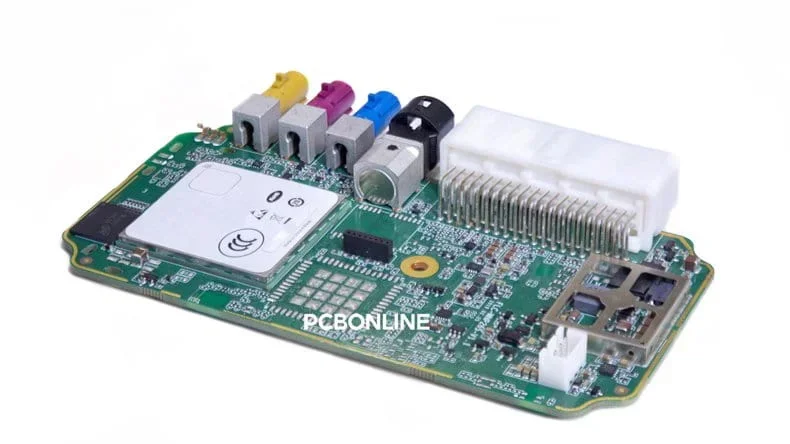
car wireless communication system using Simcom automotive-grade MCU
To develop an IoT (Internet of Things) system and put it into box-build assembly production, it is essential to understand the main components of IoT.
In this article:
Part 1: Main Components in IoT Systems Part 2: Powerful MCUs in Various IoT Systems Part 3: Common Sensors in IoT Systems Part 4: IoT PCBA Manufacturer R&D and Manufacturing Under One RoofMain Components in IoT Systems
Understanding the components in the IoT systems is fundamental before developing IoT solutions.
In an IoT system, the main components include microcontrollers (MCU), sensors, one or more actuators, and other components such as the power supply, buttons, and connectors. Especially, the MCU and sensors are the main components in any IoT system.
Microcontroller Unit (MCU)
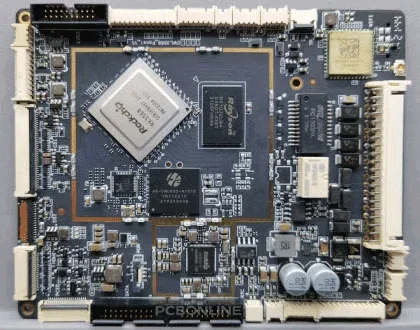
Rockchip is the MCU in the above IIoT video surveillance board
The MCU is the core of any IoT system. It is a single chip or module designed to manage specific operations in embedded systems.
MCU chips typically consist of a processor, memory, and various input/output (I/O) peripherals. They come in multiple packages, such as QFN (Quad Flat No-lead), TQFP (Thin Quad Flat Package), and BGA (Ball Grid Array), each offering different pin configurations and sizes to suit diverse applications.
Functions of an MCU in an IoT System:
- Processing data: The MCU processes data collected from sensors, executing pre-programmed algorithms to make decisions.
- Controlling actuators: It sends commands to actuators to perform specific actions, such as turning on a light or opening a valve.
- Communication: The MCU facilitates communication between different components of the IoT system, including wireless communication with other devices and cloud services.
The MCU's versatility and functionality make it indispensable in IoT systems, enabling them to perform complex tasks efficiently.
Actuators
Actuators are devices that execute actions based on commands from the MCU. They convert electrical signals into physical actions, enabling the IoT system to interact with the physical world. Common types of actuators in IoT systems include:
- Displays: Such as LCDs (Liquid Crystal Displays) and LEDs (Light Emitting Diodes), which present information visually to users.
- Motors: Used in applications like robotic arms and elevators, providing movement or rotation. Motors include DC (direct current) motors, stepper motors, and servo motors.
- Valves: Common in industrial applications, controlling the flow of liquids or gases.
- Relays: Electromechanical switches are used to control high-power devices with low-power signals.
Actuators are critical in IoT systems because they enable the system to respond to its environment and perform tangible actions.
Sensors
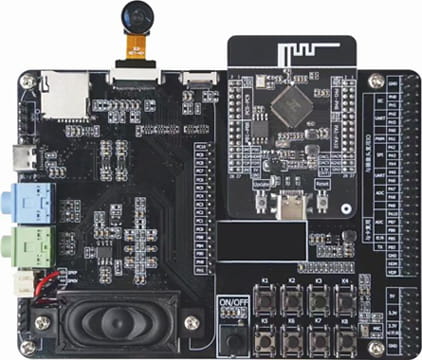
CCD sensor for a camera module used in smart door lock
Sensors are the components responsible for collecting data from the environment. They convert physical phenomena into electrical signals that the MCU can process.
Sensors are vital for IoT systems as they provide the necessary data for informed decision-making. Common types of sensors include:
- Temperature sensors: Measure the ambient temperature, such as the DHT11 or LM35.
- Humidity sensors: Detect the moisture level in the air, such as the DHT22 or SHT31.
- Gas sensors: Monitor the presence of various gases, such as the MQ-2 or MQ-135.
- Accelerometers: Measure acceleration and motion, such as the ADXL345 or MPU6050.
By gathering data from the environment, sensors act as the eyes and ears of an IoT system, enabling it to monitor and respond to changes effectively.
Other Components
In addition to MCUs, actuators, and sensors, an IoT system comprises several other essential components:
Power supply: Provides the necessary energy for the system to operate, ensuring uninterrupted functionality.
Interface components: Such as buttons and connectors, allow user interaction and connectivity with other devices.
These components work together to form a complete IoT system, with the MCU, sensors, and actuators playing the most critical roles.
In summary, MCUs, sensors, and actuators are the primary components of an IoT system, with the MCU serving as the central hub for data processing, control, and communication.
Powerful MCUs in Various IoT Systems
The market offers a wide range of MCUs for IoT systems, each providing unique features to meet different needs. In this section, we will introduce several popular and cost-effective MCUs, focusing on their applications and advantages.
Quectel Wireless Modules
Quectel offers a variety of wireless communication modules tailored for IoT applications. These modules are designed for both long-range and short-range communications, ensuring reliable data transmission in diverse environments. Some popular Quectel modules include:
- BC66-NA
- BG95-M3
- EG91-EX
- SC600T-NA
Example component: LoRa KG200Z

The LoRa KG200Z module by Quectel is a long-range, low-power wireless communication solution. It operates on the LoRaWAN technology, providing robust connectivity over long distances with minimal power consumption. This makes it ideal for applications such as smart metering, industrial automation, and agricultural monitoring. The KG200Z supports various frequency bands, making it versatile for global deployment.
The LoRa KG200Z integrates seamlessly with IoT systems, offering features like secure communication, low power usage, and extensive range, which are crucial for remote monitoring applications. Its compact design and robust performance make it a preferred choice for many IoT systems such as forest fire detection equipment, security alarms, wild animal weight scales, etc.
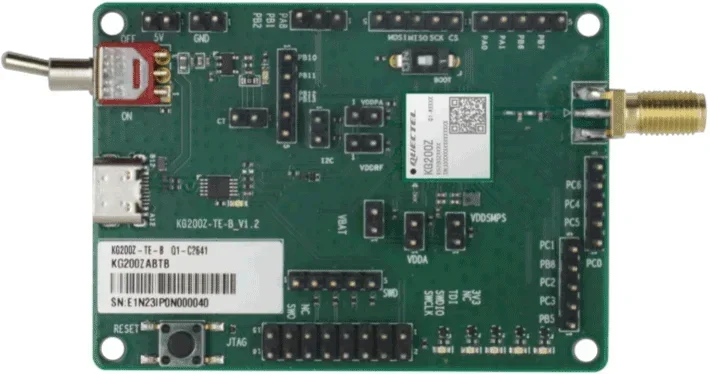
Neoway Wireless Modules
Neoway offers a comprehensive range of wireless communication modules for IoT, supporting technologies like 2G, 3G, 4G, 5G, Narrowband IoT (NB-IoT), and enhanced Machine-Type Communication (eMTC). These modules cater to various communication needs, ensuring seamless connectivity in diverse applications such as automotive wireless communications. Some notable Neoway modules include:
- N10
- N720
- N75
Example component: N720
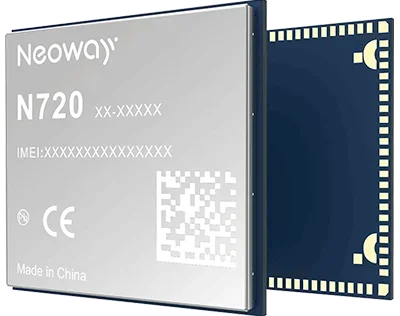
The Neoway N720 is a 4G LTE module designed for high-speed data transmission. It supports global frequency bands, making it suitable for worldwide deployment. The N720 excels in applications requiring reliable and fast connectivity, such as smart transportation, industrial IoT, and video surveillance.
The N720 module offers features like high data rates, low latency, and robust security protocols, making it ideal for applications that demand stable and secure connectivity. Its versatility and global compatibility make it a go-to solution for IoT developers looking for efficient and reliable communication modules.
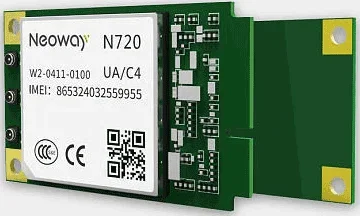
Fibocom Wireless Modules
Fibocom provides a wide range of wireless communication modules for IoT systems. They include 5G modules, smart modules, 4G modules, LTE Cat 1 modules, NB-IoT modules, LTE Cat M modules, automotive-grade modules, Global Navigation Satellite System (GNSS) modules, Wi-Fi modules, and Bluetooth modules.
Some key modules from Fibocom include:
- FM150
- FM160
- L610
Example component: FM350
The Fibocom FM350 is a 5G module designed to deliver ultra-fast connectivity with low latency. It supports both standalone (SA) and non-standalone (NSA) modes, ensuring compatibility with existing LTE networks while preparing for 5G advancements. FM350 is ideal for IoT applications like autonomous vehicles, remote surgery, and smart cities.
The FM350 module offers exceptional data rates, robust connectivity, and advanced security features, making it a top choice for high-stakes IoT applications that require cutting-edge technology. Its ability to handle large volumes of data with minimal delay is crucial for applications where real-time communication is essential.
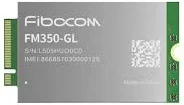
Simcom Wireless Modules
Simcom offers a variety of wireless communication modules for IoT applications, supporting technologies like GSM, GPRS, UMTS, LTE, and GNSS. Some popular Simcom modules include:
- SIM7000
- SIM800C
- SIM7600X
Example component: SIM7600X
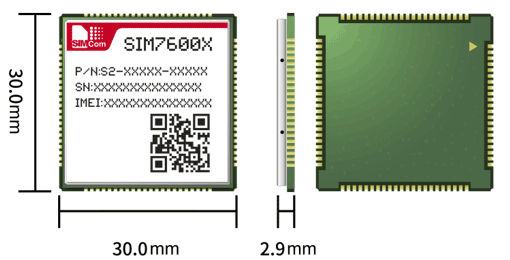
The SIM7600X module by Simcom is a versatile LTE module providing reliable 4G connectivity. It supports multiple frequency bands, ensuring global compatibility. The SIM7600X is ideal for applications like smart agriculture, telematics, and industrial IoT, where consistent and robust connectivity is crucial.
The SIM7600X module combines high-speed data transmission, low power consumption, and robust security features, making it a reliable choice for various IoT applications. It can maintain stable connections in challenging environments, which is important for remote monitoring and control applications.

Espressif Bluetooth Modules
Espressif is well-known for its Bluetooth and Wi-Fi integrated MCUs, widely used in home and commercial IoT applications. Some popular Espressif series include:
- ESP32
- ESP8266
- ESP8285
Example component: ESP32
ESP32 is a powerful MCU integrating Wi-Fi and Bluetooth capabilities. It features a dual-core processor, extensive I/O options, and a wide range of peripherals, making it suitable for a broad spectrum of IoT applications, from home automation to wearable devices.
The ESP32 offers robust connectivity, high processing power, and low power consumption. Its versatility and ease of use have made it a popular choice among IoT developers and hobbyists alike.

Example component: ESP8266
ESP8266 is another popular MCU from Espressif, known for its low cost and ease of use. It offers robust Wi-Fi connectivity and sufficient processing power for many IoT applications by hobbyists and professionals.
ESP8266 combines affordability, reliability, and ease of integration. Its widespread use and strong community support provide ample resources for developers.
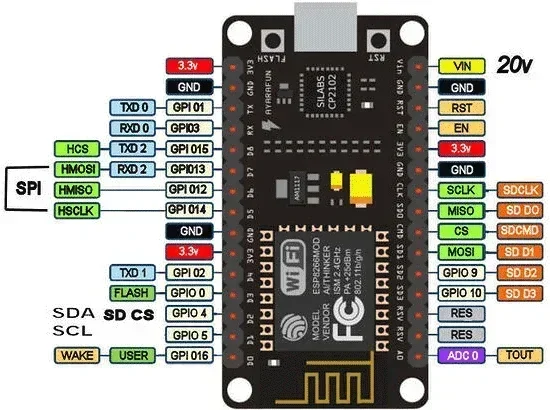
Common Sensors in IoT Systems
Sensors provide the necessary data for analysis and decision-making in IoT systems. They convert physical phenomena into electrical signals that the MCU can process.
Based on their functions, the common sensors in IoT systems include:
- environmental sensors: temperature sensors, humidity sensors, gas sensors
- motions sensors: accelerometers, gyroscopes, proximity sensors
- light sensors: light-dependent resistors, photodiodes, ambient light sensors
- other sensors: barometric pressure sensors, sound sensors, vibration sensors, water level sensors
Environmental sensors
Temperature sensors
- DHT22: A high-accuracy digital sensor measuring temperature and humidity.
- SHT31: A precise digital sensor with a fast response time and low power consumption.
Humidity sensors
- DHT22: A high-accuracy digital sensor measuring temperature and humidity.
- SHT31: A precise digital sensor with a fast response time and low power consumption.
Gas sensors
- MQ-2: A versatile sensor detecting gases like methane, butane, LPG, and smoke.
- MQ-135: Designed to detect air quality by monitoring gases like ammonia, alcohol, and benzene.
Motion sensors
Accelerometers
- MQ-2: A versatile sensor detecting gases like methane, butane, LPG, and smoke.
- MQ-135: Designed to detect air quality by monitoring gases like ammonia, alcohol, and benzene.
Gyroscopes
- L3GD20H: A digital gyroscope offering high-precision angular velocity measurements.
- MPU9250: A 9-axis motion tracking device combining an accelerometer, gyroscope, and magnetometer.
Proximity sensors
- HC-SR04: An ultrasonic sensor measures distance by calculating the time it takes for an ultrasonic wave to return after hitting an object.
- GP2Y0A21YK0F: An infrared proximity sensor providing distance measurement in analog output.
Light sensors
Light-dependent resistors (LDR): Respond to changes in light levels by varying their resistance, commonly used in light-sensitive applications.
Photodiodes
- BPW34: A photodiode with high speed and high sensitivity to light, suitable for optical communication.
- TSL2561: A digital light sensor providing precise lux measurements, ideal for applications requiring accurate light intensity readings.
Ambient light sensors
- BH1750: A digital sensor measuring ambient light intensity, often used in display backlight control.
- TEMT6000: An analog sensor detecting ambient light, commonly used in automatic brightness adjustment systems.
Other sensors
Barometric pressure sensors
- BMP180: A low-cost sensor providing accurate barometric pressure and temperature readings, often used in weather monitoring and altitude measurement.
- BMP280: An upgraded version of BMP180, offering better accuracy and lower power consumption.
Sound sensors
- LM393: A sound detection module that triggers when the sound level exceeds a certain threshold.
- MAX9814: A high-quality microphone amplifier with automatic gain control, suitable for audio applications.
Vibration sensors
- SW-420: A vibration detection sensor that triggers when vibration is detected, often used in security systems.
- ADXL362: A low-power accelerometer suitable for detecting vibration and motion, used in wearable devices and asset tracking.
Water level sensors
- JSN-SR04T: An ultrasonic water level sensor designed for long-range measurement in harsh environments.
- YL69: A soil moisture sensor used to measure water content in soil, ideal for agricultural applications.
In an IoT system, sensors capture specific data and allow the IoT system to interact intelligently with its environment. With these sensors, IoT systems can monitor a wide range of environmental conditions and respond appropriately.
IoT PCB Assembly Manufacturer R&D and Manufacturing Under One Roof
Knowing the main components of IoT, how do you develop and manufacture the IoT system and product in your brand? You can work with the IoT PCBA manufacturer PCBONLINE which provides one-stop R&D and manufacturing services from prototypes to mass production of final IoT devices.

PCBONLINE is a source factory manufacturer for IoT PCBA and final products, having two large advanced PCB manufacturing bases, one PCB assembly factory, strategic cooperation with the above-mentioned MCU companies, and an R&D team.
PCBONLINE provides one-stop IoT PCB assembly manufacturing, including sourcing all components in IoT, PCB fabrication, PCB assembly, PCBA value-added and testing, and box-build assembly.
Besides IoT PCB assembly, PCBONLINE can do R&D for your IoT system according to your requirements or take part in co-development with your engineers to ensure no defects and lower fabrication costs.
PCBONLINE offers free DFM (design for manufacturing) for IoT projects, including Gerber and BOM checks, manufacturing and testing process design, selecting alternate components to replace the expensive ones, and solving issues to ensure the success of the IoT project.
High-quality IoT PCBA manufacturing certified with ISO 9001:2015, IATF 16949:2016, RoHS, REACH, UL, and IPC-A-610 Class 3.
When an IoT PCBA project goes to the mass production stage, PCBONLINE refunds the fees of R&D, prototype/sample, and offers free PCBA functional testing.
No matter what quantity of IoT boards you want, the professionals at PCBONLINE offer one-on-one engineering support throughout your project. To get a quote for your IoT project, email info@pcbonline.com.
Conclusion
In conclusion, an IoT system is composed of many components, with MCUs, sensors, and actuators being the primary ones. The MCU serves as the brain of the system, processing data and controlling actions. The sensors provide the data required for informed decision-making. Actuators execute the physical actions based on the MCU's commands, enabling the system to interact with the environment.
Understanding these components is fundamental for engineers working in the IoT field. For the creation and manufacturing of robust and efficient IoT systems, work with the IoT PCBA manufacturer PCBONLINE for one-stop solutions.
PCB assembly at PCBONLINE.pdf




